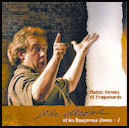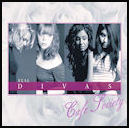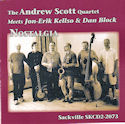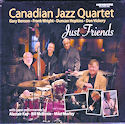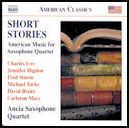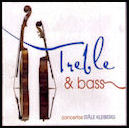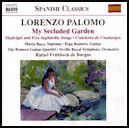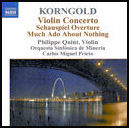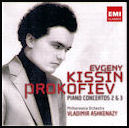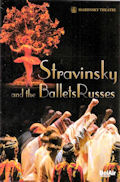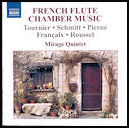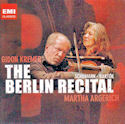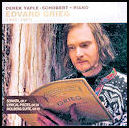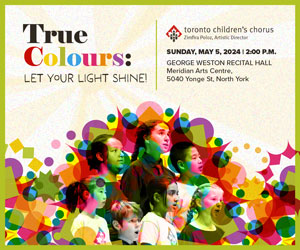A masterful and distinctive soloist, French bassist Joëlle Léandre is versatile in any musical situation. These impressive CDs showcase her improvisational skills, while elsewhere the conservatory-trained Parisian is as comfortable with notated music, often performing studies written for her by composers such as John Cage and Giacinto Scelsi.
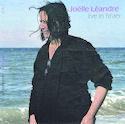 One of the two CDs that make up Joëlle Léandre Live in Israel (Kadima KCR 17 www.kadimacollective.com) verifies her solo skill. This showcase includes exposition, theme variations and finale, without being conventionally programmatic. Equally strident and soothing, her string strokes include thick rhythmic scrubs and spiccato patterning that produce not only initial tones, but also corresponding echoes. Lyrical and romantic on one hand, her harsh string sweeping also expands with snaps, taps and banjo-like frailing. Sometimes she vocalizes as she plays, adding another dimension to the performance. Commanding on her own, she inserts herself into groups without fissure. In a sextet on the companion CD featuring Israeli reedists, her triple-stopped advances lock in with the horns’ contrapuntal key-slipping and trill spraying. Never upsetting balanced reed bites, her sul tasto expansions amplify the crunching dynamics of pianist Daniel Sarid, while her wood-slapping pulse operates in tandem with the flams and bounces of drummer Haggai Fershtman. In trio interaction with bassist JC Jones and saxophonist Stephen Horenstein, she lets the other bassist time-keep with col legno stops, while she string-snaps and pumps. Her bel canto warbling not only adds another texture, but also joins in double counterpoint with the saxophonist’s rubato tonguing.
One of the two CDs that make up Joëlle Léandre Live in Israel (Kadima KCR 17 www.kadimacollective.com) verifies her solo skill. This showcase includes exposition, theme variations and finale, without being conventionally programmatic. Equally strident and soothing, her string strokes include thick rhythmic scrubs and spiccato patterning that produce not only initial tones, but also corresponding echoes. Lyrical and romantic on one hand, her harsh string sweeping also expands with snaps, taps and banjo-like frailing. Sometimes she vocalizes as she plays, adding another dimension to the performance. Commanding on her own, she inserts herself into groups without fissure. In a sextet on the companion CD featuring Israeli reedists, her triple-stopped advances lock in with the horns’ contrapuntal key-slipping and trill spraying. Never upsetting balanced reed bites, her sul tasto expansions amplify the crunching dynamics of pianist Daniel Sarid, while her wood-slapping pulse operates in tandem with the flams and bounces of drummer Haggai Fershtman. In trio interaction with bassist JC Jones and saxophonist Stephen Horenstein, she lets the other bassist time-keep with col legno stops, while she string-snaps and pumps. Her bel canto warbling not only adds another texture, but also joins in double counterpoint with the saxophonist’s rubato tonguing.
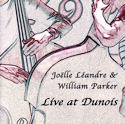 More reductive, Joëlle Léandre & William Parker Live at Dunois (Leo CD LR 535 www.leorecords.com) captures a bravura showcase for Léandre and Manhattan’s William Parker, whose jazz-honed techniques are as celebrated as hers. Performance roles are defined: Parker thumps, walks and slaps his bass in pedal point, while Léandre uses her bow to swirl rococo tinctures that encompass agitated peaks and valleys of flying spiccato. This isn’t a brawl but an expression of mutual respect. At points both combine strokes as polyphonic textures rappel every which way. Reaching an intermezzo of floating concussion and friction, the two fuse as if they were playing an eight-stringed bass. Unbroken portamento runs echoing in double counterpoint, although each maintains individual identity.
More reductive, Joëlle Léandre & William Parker Live at Dunois (Leo CD LR 535 www.leorecords.com) captures a bravura showcase for Léandre and Manhattan’s William Parker, whose jazz-honed techniques are as celebrated as hers. Performance roles are defined: Parker thumps, walks and slaps his bass in pedal point, while Léandre uses her bow to swirl rococo tinctures that encompass agitated peaks and valleys of flying spiccato. This isn’t a brawl but an expression of mutual respect. At points both combine strokes as polyphonic textures rappel every which way. Reaching an intermezzo of floating concussion and friction, the two fuse as if they were playing an eight-stringed bass. Unbroken portamento runs echoing in double counterpoint, although each maintains individual identity.
As with the Stone Quartet in Guelph with whom she performs this month, Léandre has an affinity for 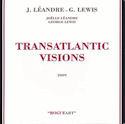 brass and piano players. Joëlle Léandre-George Lewis Transatlantic Visions (RogueArt ROG-0020 www.roguart.com) and Joëlle Léandre & Quentin Sirjacq Out of Nowhere (Ambiance MagnétiqueAM184 www.actuellecd.com) confirm this. The firs
brass and piano players. Joëlle Léandre-George Lewis Transatlantic Visions (RogueArt ROG-0020 www.roguart.com) and Joëlle Léandre & Quentin Sirjacq Out of Nowhere (Ambiance MagnétiqueAM184 www.actuellecd.com) confirm this. The firs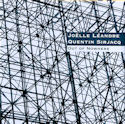 t is a meeting between the bassist and American trombonist Lewis, with whom she has worked for decades. Sirjacq is a French pianist she has just begun to partner. Familiarity and novelty produce equivalently outstanding CDs. Chamber music-like in its initial delicacy, her duet with the pianist becomes intense as vibrating bass harmonies encourage Sirjacq to toughen his output. Soon her jagged arpeggios and glissandi are met by metronomic pounding, key fanning and internal string plucking from the pianist. Anything but equal temperament, stopped soundboard buzzes on Ruin are joined by church-bell-like gongs from Sirjacq, as Léandre doubles her sul ponticello bowing, while growling nonsense syllables. In the penultimate Awakening her quivering bowing is bisected by a flurry of kinetic key patterns. Finally Closing mates her flamenco-like rubs with his construction of an edifice of expansive arpeggios and cascading chording, reintroducing the theme for musical closure.
t is a meeting between the bassist and American trombonist Lewis, with whom she has worked for decades. Sirjacq is a French pianist she has just begun to partner. Familiarity and novelty produce equivalently outstanding CDs. Chamber music-like in its initial delicacy, her duet with the pianist becomes intense as vibrating bass harmonies encourage Sirjacq to toughen his output. Soon her jagged arpeggios and glissandi are met by metronomic pounding, key fanning and internal string plucking from the pianist. Anything but equal temperament, stopped soundboard buzzes on Ruin are joined by church-bell-like gongs from Sirjacq, as Léandre doubles her sul ponticello bowing, while growling nonsense syllables. In the penultimate Awakening her quivering bowing is bisected by a flurry of kinetic key patterns. Finally Closing mates her flamenco-like rubs with his construction of an edifice of expansive arpeggios and cascading chording, reintroducing the theme for musical closure.
In contrast to the tentative exposition on “Out of Nowhere”, Léandre and Lewis are fully attuned from the get-go and stay that way. Announcing herself with a guttural snarl, at points she vocalizes alongside her string strokes. In addition to sweeping glissandi and staccato string-scouring, Léandre yowls as Lewis’ lows gutbucket tones. In response to her sul tasto runs, the trombonist exposes rotund tones and rubato yelps. If he showcases subterranean grace notes from inside his horn, she smacks the strings col legno. Sounding as if they could stretch their instruments’ tessitura indefinitely, they reach a climax at the half-way point as glottal stops from Lewis are complemented by pumped arpeggios and contrapuntal strumming from Léandre.
But perhaps the most palpable testimony to Léandre’s sonic versatility is the tracks she shares with oud player/vocalist Sameer Makhoul on “Live in Israel”. Despite the oud’s five pairs of strings compared to her four, she manages to advance buzzing timbres that perfectly match his breakneck finger-picking. Not only that, but her rhythmic breaths and free-form chanting complement his vocalized glossolalia so that the two sound as if they’re performing a Middle Eastern operetta.
Concert Notes: Joëlle Léandre performs at the Guelph Jazz Festival on September 10 as part of The Stone Quartet and on September 12 in a solo recital.






